Paddle Tennis vs Pickleball: Key Differences and Similarities
When it comes to racket sports, two games that have surged in popularity across the United States are paddle tennis and pickleball. Both sports feature unique gameplay mechanics, community dynamics, and health benefits, making them appealing to a diverse range of players. But how do they stack up against each other? If you’re new to the world of paddle sports, you might find yourself wondering which game suits your style better. In this in-depth comparison, we will explore the nuances of each sport from court dimensions and equipment variations, through scoring systems and player demographics, to strategies and health benefits. Whether you’re looking to pick up a new hobby or delve deeper into the competitive side of sports, understanding these two games can help you make an informed choice. So, let’s dive into paddle tennis versus pickleball and discover what makes each one unique!
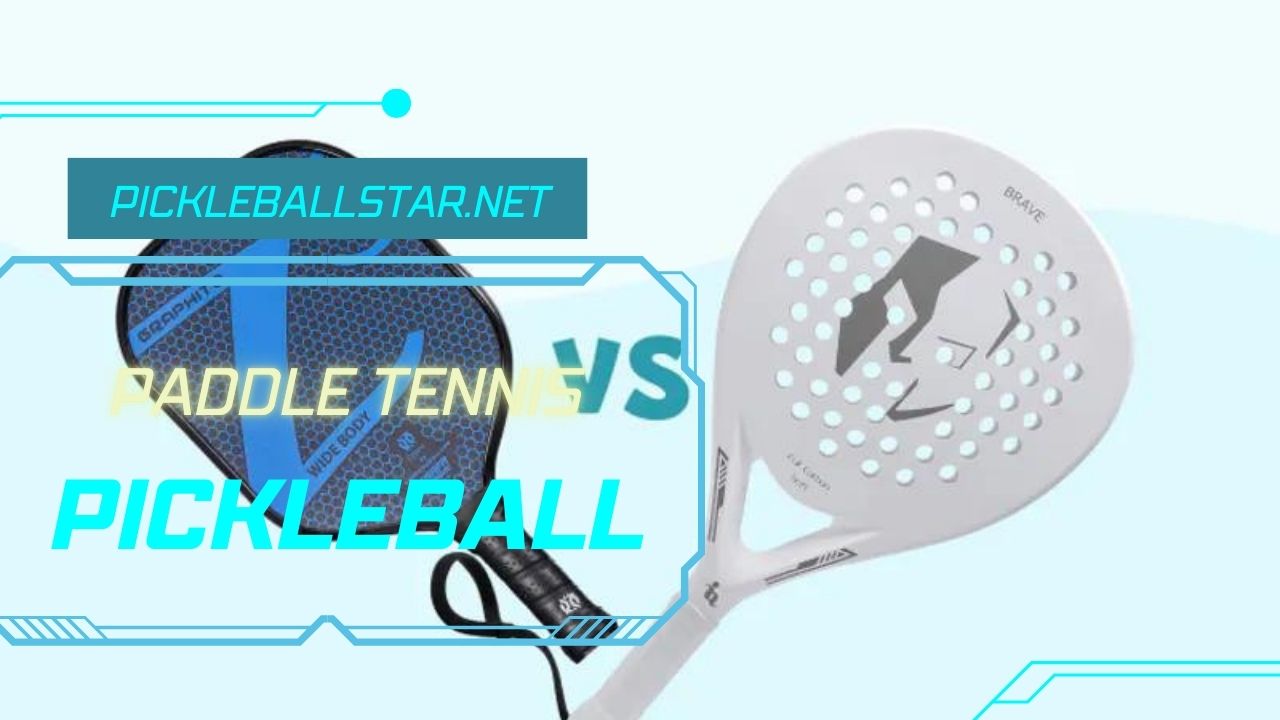
Key differences between paddle tennis vs pickleball
At first glance, paddle tennis and pickleball may seem quite similar they both involve paddles and a rectangular court but several key differences set them apart. These nuances can significantly affect how the game is played and enjoyed. First, let’s consider court dimensions: a standard pickleball court measures 20 feet wide by 44 feet long both for singles and doubles games. In contrast, a paddle tennis court is slightly longer, measuring 20 feet wide and 50 feet long. This adds a bit of space on the ends, allowing for a different style of play characteristic of paddle tennis.
Next, the net height distinguishes the two sports. In pickleball, the net stands at 36 inches at the sidelines and 34 inches at the center, creating an opportunity for various strategic plays, especially drop shots and volleys. Paddle tennis keeps its net height consistent at 36 inches across, contributing to a more dynamic and power-focused game that can feel more akin to traditional tennis.
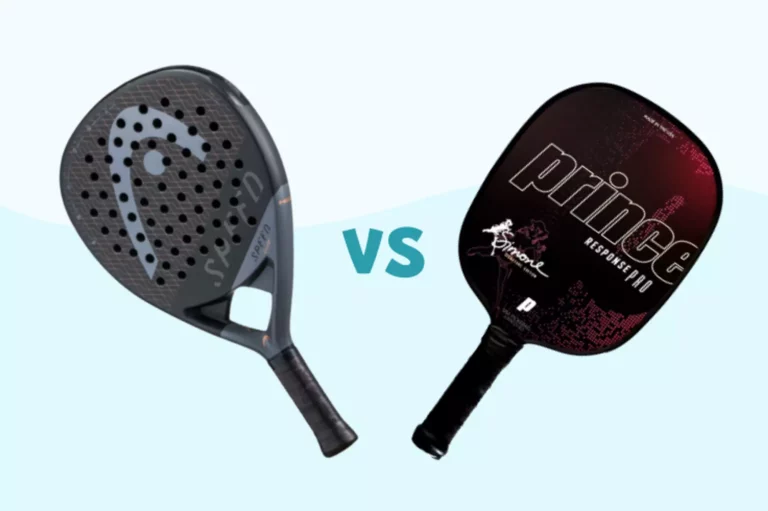
Another major difference is the presence of a non-volley zone, commonly referred to as “the kitchen,” in pickleball. This extends 7 feet from the net, preventing players from volleying the ball too close to the net and encouraging more thoughtful shot placement. Paddle tennis has no designated non-volley zone, allowing players to volley anywhere on the court. This can drastically change the dynamic of each game and may appeal more to players who thrive on fast-paced action.
Lastly, the scoring systems significantly differ between the two sports. Pickleball features a straightforward scoring format where points can only be earned by the serving team, reinforcing a strategic aspect regarding when to serve. Paddle tennis allows both teams to score regardless of who served, leading to varied strategies that can make the game feel more competitive and fast-paced.
In sum, these differences illuminate not just the rules but the overall atmospheres and experiences that paddle tennis and pickleball offer to players.
Court dimensions comparison
Understanding court dimensions is critical for grasping the tactical intricacies, physical demands, and overall flow of paddle tennis and pickleball.
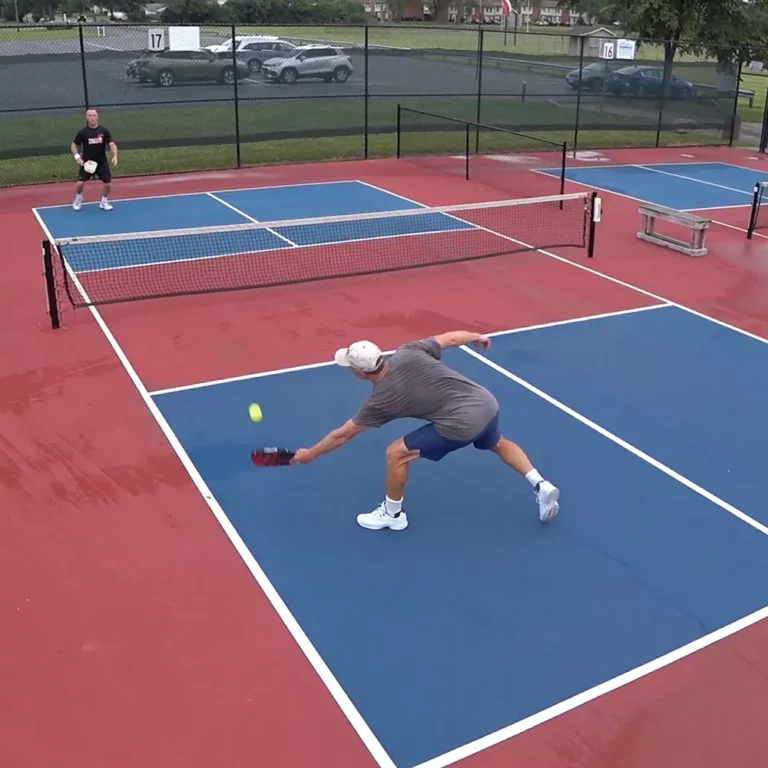
- Pickleball Court Dimensions:
- Length: 44 feet (for both singles and doubles)
- Width: 20 feet
- Non-volley zone (the kitchen): 7 feet from the net
- Net height: 36 inches at the sidelines, 34 inches at the center
- Paddle Tennis Court Dimensions:
- Length: 50 feet
- Width: 20 feet
- Non-volley zone: None
- Net height: 36 inches uniformly
The court size in pickleball, being smaller, creates a more compact environment that necessitates quick reflexes and agile movements. Players have less distance to cover, resulting in faster-paced rallies. The presence of the non-volley zone further shapes gameplay; players must strategize when to approach the net without risking costly mistakes.
Conversely, paddle tennis courts allow for longer rallies due to the additional space. Players have the freedom to volley the ball at any position, leading to dynamic exchanges that often prioritize speed and power. The lack of a non-volley zone means that players can maintain an aggressive stance near the net, allowing for daring plays that may intimidate opponents. Squarely targeting the strategic aspects of each game, these court differences influence how players approach their tactics and shot selections.
Ultimately, whether you prefer the rapid exchanges of pickleball or the strategic depth of paddle tennis, understanding court dimensions reinforces how each sport caters to distinct playing styles.
Equipment variations: paddles and balls
Equipment plays a vital role in shaping the gameplay for both paddle tennis and pickleball, significantly impacting performance and feel on the court.
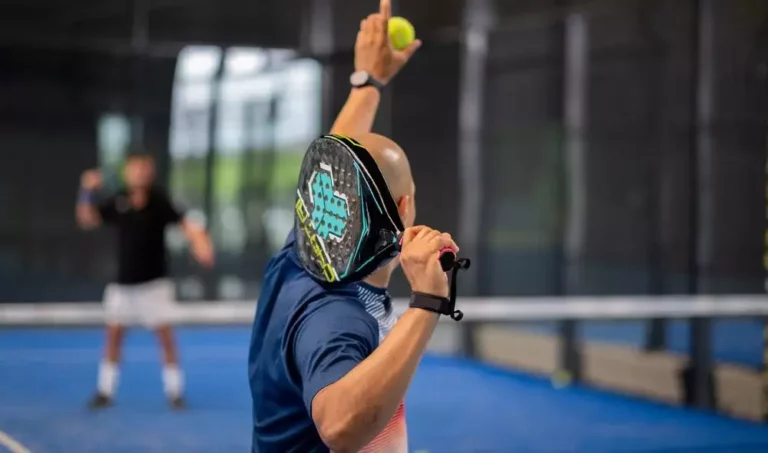
- Paddles:
- Pickleball Paddles: Generally larger and made from composite materials (like polymer and fiberglass), pickleball paddles have a smooth, solid surface. They vary in weight, usually around 7.5 ounces, allowing for more finesse in shots. The design enables players to execute a range of techniques, including dinking and powerful drives, all while maintaining control and accuracy.
- Paddle Tennis Paddles: On the other hand, paddle tennis paddles are often smaller, lighter (but varying in weight), and can feature string beds or be solid. What makes them unique is their perforated design, which contributes to the ability to generate powerful shots similar to those in traditional tennis. The grip and surface of these paddles are tailored for players looking to execute forceful returns and strategic plays that leverage walls in game situations.
- Balls:
- Pickleball Balls: Pickleball is played with a plastic ball, typically 2.92 inches in diameter and weighing between 0.78 and 0.93 ounces. The perforations allow the ball to travel swiftly through the air, enhancing its spin and making it responsive to varying shot techniques, which facilitates control during play.
- Paddle Tennis Balls: These balls resemble traditional tennis balls in size, but they are depressurized and usually softer, designed to suit the gameplay of paddle tennis. The lighter weight contributes to a different feel when serving and rallying, as their reduced bounce can influence the pace of play significantly.
Through a clear exploration of the equipment, it becomes apparent that the choice of paddles and balls in both sports not only affects how each game is played but also influences player preferences and styles. The distinct characteristics of each game can lead to varying levels of engagement and excitement on the court.
Scoring systems explained
Understanding the scoring systems of paddle tennis and pickleball is essential to grasping their gameplay dynamics. Each sport employs its own approach that shapes how players strategize and engage during matches.

- Pickleball Scoring:
- The scoring system in pickleball is relatively straightforward and is designed for quick matches, with games typically played to 11 points. Players must win by a minimum of two points. The unique aspect of pickleball is that only the serving team can score points during a rally. This means that while it’s important to serve effectively, it’s equally critical to return serves strategically to gain the upper hand in future serves.
- With this format, points are earned primarily through careful shot placement, teamwork, and strategic exchanges. The simplicity of the pickleball scoring system makes it accessible for beginners while also providing tactical depth for more experienced players.
- Paddle Tennis Scoring:
- In paddle tennis, the scoring system aligns more closely with traditional tennis, with points counted as 15, 30, 40, and then a game. Furthermore, both teams can score points regardless of who served, adding another layer of intensity to rallies. Matches are typically played until a team wins a specified number of sets or games, giving it a longer competitive feel.
- The absence of a limit on scoring opportunities encourages players to strive fiercely for every point, creating a more aggressive playing environment where quick decisions can lead to momentum shifts.
The differences in scoring systems clearly elucidate how gameplay and strategy can diverge between the two sports. The limited scoring opportunities in pickleball foster finesse and precision, while the broader scoring approach in paddle tennis often incentivizes power and aggressive play. Each scoring format reflects how players approach the game, creating distinct experiences on the court.
Gameplay mechanics
Paddle tennis and pickleball offer distinct gameplay mechanics that cater to different player styles and preferences.
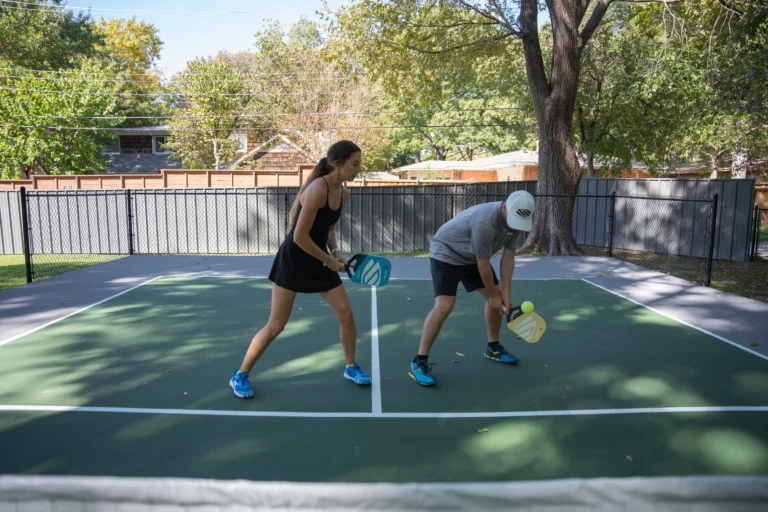
Pickleball Gameplay Mechanics:
- Court Structure: The compact nature of the pickleball court allows for shorter rallies and quick exchanges. Players must maintain awareness of the non-volley zone, using it strategically when engaging in dinks and drop shots. This facilitates a game style that emphasizes finesse over brute strength.
- Two-Bounce Rule: To encourage longer rallies and thoughtful shot placement, players must let the ball bounce once on each side before volleying. This rule helps to slow the game’s pace initially, providing opportunities for strategic play.
- Shot Variety: The game encourages players to utilize a range of techniques, including dinks, drives, and lobs, which can create challenges for opponents, requiring adaptability and timely decision-making during play.
Paddle Tennis Gameplay Mechanics:
- Wall Dynamics: The presence of walls in paddle tennis courts introduces an exciting element, allowing players to use wall rebounds to their advantage. This can create unique angles and challenging shots that keep opponents guessing.
- Continuous Play: Unlike pickleball, where the non-volley zone must be observed, players in paddle tennis can volley at any position on the court. This encourages aggressive net play and more energetic rallies, emphasizing both endurance and speed.
- Rally Intensity: The larger court requires more movement, resulting in sustained rallies that can be taxing, emphasizing physical fitness and stamina. Players often engage in a mix of strategic shot placement and powerful attacks to outmaneuver their competitors.
By delineating these gameplay mechanics, we see how each sport offers unique challenges and rewards. While pickleball appeals to those who appreciate strategy and precision, paddle tennis attracts players who thrive in fast-paced and dynamic settings. Ultimately, understanding gameplay mechanics can inform players’ choices and enhance their enjoyment of each sport.
Serving rules and techniques
Serving serves as a critical aspect of both paddle tennis and pickleball, yet the rules and styles differ between these two sports.
Pickleball Serving Rules:
- Style: A defining feature of pickleball is the underhand serve, which involves hitting the ball with the paddle below waist level. This serves to create a unique flow whilst ensuring that serves are consistent and offers a fair advantage to both players.
- Court Positioning: The serve must cross the net and land within the designated diagonal service area, creating distinct zones for strategy. Players only have one opportunity to get the ball over the net, so precision and control are paramount.
- Non-Volley Zone Compliance: It’s essential to avoid the non-volley zone when serving resulting in a fault if the serve lands in that region. This dictates where players can position themselves on the court pre-serve, leading to more strategic gameplay.
Paddle Tennis Serving Rules:
- Flexibility: Paddle tennis allows players greater freedom in serving styles, including the option for overhand serves. This flexibility leads to more aggressive serving options and varying techniques that challenge opponents immediately upon serve.
- Court Positioning: Like in pickleball, serves must land in the opposite service box. However, players can use strategic targeting to make it difficult for opponents to respond, leading to more aggressive rallies right from the start.
- Scoring Dynamics: Paddle tennis incorporates scoring from both serves and returns, meaning each serve and return counts more towards establishing momentum and creating interactions between players.
In summary, the serving rules and techniques employed in each sport not only shape the initial conditions of each rally but also impact the overall pacing and strategies adopted throughout the match. Having a deep understanding of these rules enhances players’ approaches and adaptability on the court.
Volleying and ball bounce rules
Both paddle tennis and pickleball incorporate unique rules that govern volleying and ball bouncing, significantly influencing gameplay dynamics and strategies.
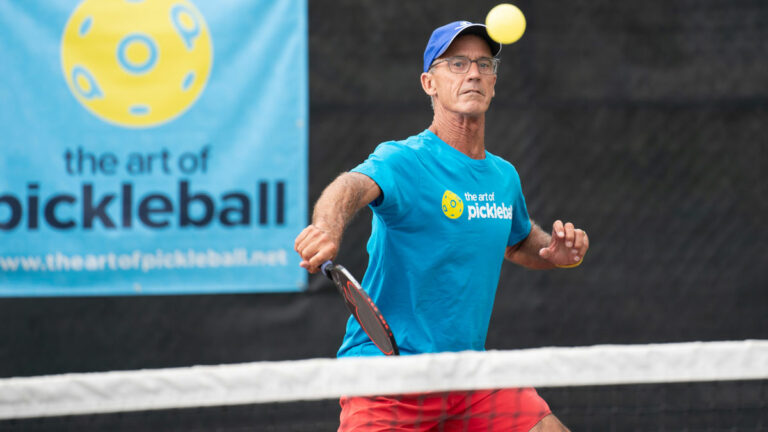
Pickleball:
- Volleying: In pickleball, the “kitchen” or non-volley zone ensures players must let the ball bounce when inside this 7-foot area. This rule encourages longer rallies, as players must engage strategically and position themselves wisely to return shots effectively and avoid penalty.
- Ball Bounce: Following the serve, both teams must let the ball bounce once on each side before players can begin volleying. This two-bounce rule emphasizes strategic placement and finesse over power, creating a more cerebral approach to gameplay.
Paddle Tennis:
- Volleying: Unlike pickleball, there is no specific non-volley zone in paddle tennis, allowing players to volley at any time post-serve. This leads to aggressive play styles and a greater emphasis on quick reflexes and positioning.
- Ball Bounce: Similar to pickleball, the ball must bounce on the receiving side before it can be returned. However, players in paddle tennis can volley immediately after the serve in doubles matches, creating a faster-paced and more dynamic experience compared to singles play.
These distinct rules governing volleying and ball bounces manifest in the gameplay experiences of each sport. Players in pickleball engage with an emphasis on strategy, while paddle tennis encourages a more aggressive and reactive form of play. By recognizing these differences, players can adapt their strategies to maximize gameplay enjoyment and effectiveness.
Match formats: singles vs. doubles
Understanding match formats is fundamental to appreciating the social aspect and competitive nature of both paddle tennis and pickleball.
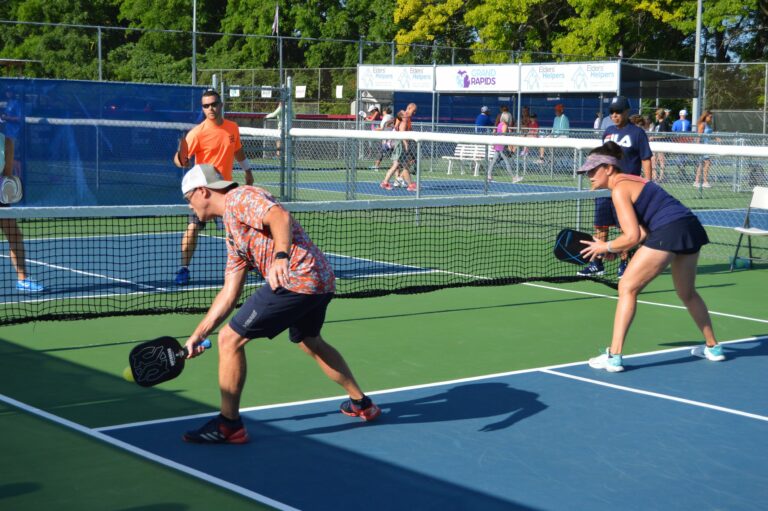
Pickleball Match Formats:
- Singles: In singles pickleball, each player competes against a single opponent, covering the entire court. This format emphasizes individual skill and stamina, compelling players to balance offensive strategies with defensive coverage.
- Doubles: Doubles pickleball remains the more popular format, where two players partner together on each side. This allows for effective teamwork and strategic coordination, enhancing social interaction and enhancing the fun of play.
Paddle Tennis Match Formats:
- Singles: Similar to pickleball, singles paddle tennis involves one player per side, emphasizing individual competitiveness. The absence of a non-volley zone encourages more aggressive volleying, resulting in faster-paced matches and dynamic exchanges.
- Doubles: Doubles paddle tennis follows a similar dynamic to doubles pickleball, enabling teams of two to work collaboratively. Players cultivate strategies to support one another, facilitating effective coverage and maximizing offensive plays.
The differences in singles and doubles formats across both sports showcase how each format brings distinct social interactions, strategies, and approaches. The cooperative element in doubles play entices players toward communal dynamics, while singles play fosters personal challenge and development. Understanding these aspects facilitates engagement in both paddle tennis and pickleball, making them enjoyable for various player types.
Popularity and accessibility
Popularity and accessibility play a significant role in determining the sports’ appeal to potential players. Both paddle tennis and pickleball boast thrilling gameplay, yet their presence and community support differ quite starkly across the United States.
Paddle Tennis: Paddle tennis has an established history, especially in urban areas, but its growth trajectory hasn’t matched that of pickleball. While it attracts dedicated enthusiasts particularly in cities like New York and Los Angeles it’s not as widely accessible. Finding dedicated paddle tennis courts can be challenging due to spatial constraints, and organized events may be less common outside urban environments.
Pickleball: In stark contrast, pickleball has experienced explosive growth over recent years, climbing the ranks to become one of the fastest-growing sports in America. Millions of players across diverse demographics engage in pickleball, resulting in 13.6 million participants in 2023. Its appeal largely stems from its accessibility; pickleball courts can be easily found in community centers, schools, and parks. Notably, converting existing spaces such as modifying tennis courts has enhanced availability for players at all skill levels.
This surge in popularity is not merely anecdotal; studies indicate that participation grew by approximately 223.5% over the past three years, making it clear that community investment and facility availability play essential roles in its growth. The welcoming and accessible nature of pickleball stands in stark contrast to the more localized, niche appeal of paddle tennis.
The events and engagement surrounding these sports serve as testament to their status. As pickleball continues to draw participation, it cultivates a welcoming environment that enhances community engagement compared to paddle tennis, whose players may find themselves in more traditional or structured settings.
Growth trends in paddle tennis
While paddle tennis has long maintained a dedicated player base, its growth trends have not been as explosive as those seen in pickleball. This sport, often popular in urban settings and countries such as Spain, has captured the interest of various players but struggles to attain a broader audience in the U.S.
Despite its challenges, paddle tennis showcases unique characteristics that many players find appealing. The sport’s fast-paced nature and strategic use of walls attract racquet sports enthusiasts who appreciate its tactical depth. Regions such as Florida and New York boast a notable paddle tennis community characterized by loyalty and enthusiasm.
However, compared to pickleball, finding dedicated paddle tennis facilities can prove more difficult. This lack of accessibility may deter newcomers especially compared to the nearly 14,000 pickleball courts established across the country, contributing heavily to its rapid growth. As paddle tennis courts are often fewer and often dependent on urban settings, budding players may face barriers in engaging with the sport.
To facilitate growth, fostering greater awareness about paddle tennis and investing in more facilities can enhance its popularity. Community leagues, social events, and organized training programs can amplify interest while encouraging existing players to share their passion with others.
Overall, while paddle tennis has enjoyed sustained interest over the years, enhancing its accessibility and community presence can help it better adapt to an increasingly competitive landscape.
Rise of pickleball in recreational sports
Pickleball has emerged spectacularly, as one of the fastest-growing sports in the United States. Its growth can be attributed to several defining factors, including accessibility, low equipment barriers, and a vibrant social element.
Popularity: Recent statistics reveal unequivocally that participation in pickleball has surged. In 2023, approximately 13.6 million people in the United States were recorded to play the sport, leading to a growth increase of nearly 223.5% over the past three years. This explosive rise in numbers draws a diverse range of players from local community centers to competitive clubs indicating a widespread appeal across demographics and age groups.
Accessibility: The sport’s popularity can almost entirely be traced back to its accessibility. The equipment needed to start playing is minimal essentially just paddles and a plastic ball making it easy for newcomers to join. Furthermore, its low-impact nature is appealing, particularly to older adults and those with physical limitations, allowing them to remain active without the high demands of more strenuous activities.
On top of these aspects, pickleball’s social nature enhances its attractiveness, as players commonly engage in community hangs, tournaments, and casual games with minimal need for prior arrangements. This social fabric contributes to the dynamic community vibe, allowing individuals to join games freely and make new connections.
In summary, the race toward that pickleball has embarked on reflects its appealing characteristics accessibility, social integration, and a growing community. These elements make it an exceptional candidate for recreational sports, driving newcomers to explore the game while simultaneously drawing seasoned players into its warm embrace.
Availability of courts and facilities
The availability of courts and facilities plays a crucial role in the accessibility and attractiveness of both paddle tennis and pickleball. Each sport depends significantly on community engagement and investment to ensure facilities are present and accessible for players.
- Current State of Facilities: As of 2023, pickleball boasts at least 13,969 dedicated courts in the United States, with total estimated people playing exceeding 50,000 players looking for locations for casual play . This significant infrastructure reflects the increasing interest in the sport and community investment at all levels.
- Community Impact: The rise in dedicated pickleball courts, often sprouting within parks and community centers, affords players of varying skill levels a space to engage in the sport. This accessibility encourages social play opportunities alongside competitive events or league organization.
In contrast, paddle tennis often lacks the same infrastructure. While it enjoys popularity in urban centers, specifically where courts are often limited and shared, the absence of numerous dedicated facilities means access can be a challenge. Urban enthusiasts face geographical constraints, hindering newcomers who lack nearby options or proper facilities, potentially shutting out interest before it becomes established.
The disparity in availability between pickleball and paddle tennis highlights how crucial community investment is to establish engaging sports experiences.
Player demographics and skill levels
When examining player demographics and skill levels in paddle tennis and pickleball, we find varying engagement experiences that reflect the broader popularity of each sport.
Who plays paddle tennis?
Paddle tennis typically attracts a somewhat niche audience. While geographic differences exist, the sport is predominantly embraced in urban areas. Most players are older adults seeking a less intense form of tennis while still engaging in physical activity. The sport’s sociable aspects further cement its appeal, as many play to connect with others in their community.
While skilful play is often present, particularly from those with tennis backgrounds, the accessibility and emphasis the game places on casual interaction lead many to join at varying skill levels. This breadth of player engagement fosters a sense of community and support among participants, making it an inviting environment for newcomers and casual players alike.
Pickleball player profiles and trends
In stark contrast, pickleball’s exponential rise in popularity has attracted a diverse range of players. As of early 2023, about 8.9 million Americans play pickleball, making it accessible to a broader demographic. From young adults to senior citizens, the age distribution reflects a balanced mix, with 27.8% of players falling between 18 and 34 years old, and 19.9% aged 55 and above.
Moreover, player profiles indicate a notable increase in female participation, as the sport is becoming increasingly appealing to women eager to engage in social, yet competitive, activity . Gender representation is relatively balanced, with men making up 60.5% of players and women 39.5%, a trend showing growth in various player profiles.
This surge in demographics illustrates pickleball’s versatility, catering to players across different ages and skill levels. The sport’s social nature and ease of learning invite newcomers, contributing to its diverse player base and fostering a sense of inclusivity.
Beginner-friendly aspects of each sport
Both paddle tennis and pickleball offer beginner-friendly environments, albeit in different ways.
Beginner-Friendly Features in Pickleball:
- Simplicity of Rules: The rules of pickleball are relatively straightforward, making them easier for newcomers to learn. Its low-impact nature further accommodates players of different abilities.
- Community Interaction: The sport promotes a welcoming atmosphere where players can engage in leagues, clinics, and friendly games, allowing for easy entry into the sport.
- Shorter Court Dimensions: With smaller court dimensions, players can feel less overwhelmed compared to traditional tennis, making it a comfortable starting point for newcomers.
Beginner-Friendly Features in Paddle Tennis:
- Reduced Court Size: Paddle tennis courts are less intimidating than traditional tennis courts, giving new players a chance to feel comfortable and build their skills.
- Informal Play Opportunities: Paddle tennis is often enjoyed in a relaxed atmosphere, enabling beginners to engage in matches without the pressure of formal competition.
Both sports structure their environments for new players to flourish, yet paddle tennis might appeal more to those looking for a slightly less intense introduction. In the case of pickleball, the communal aspect proves particularly important, as players cultivate a sense of belonging that reinforces engagement alongside skill development.
Strategies and gameplay styles
Distinct gameplay styles and strategies define the engaging experiences offered by paddle tennis and pickleball, reflecting their unique characteristics and encouraging players to develop tactics suited to their strengths.
Offensive strategies in paddle tennis
- Powerful Serves: One of the primary offensive tactics in paddle tennis revolves around utilizing strong serves to gain an advantage from the start. Players often aim for corner shots or line deliveries to challenge their opponents’ readiness.
- Wall Play: Another unique strategic element is the use of surrounding walls in paddle tennis. Players can use the walls to set up unexpected angles that opponents must navigate, challenging their positioning and foresight.
- Aggressive Net Play: Positioning oneself at the net after returning bullies opponents into a defensive position. Establishing dominance near the net boosts chances of winning points through rapid exchanges and expert volleys.
- Deceptive Shots: Players use deception in their shots, pretending to strike one type of shot while utilizing another technique. This element of surprise disorients opponents and creates openings for effective counterplay.
Offensive strategies in pickleball
- Third Shot Drop: A popular tactic involves executing a soft “third shot drop” into the opponent’s non-volley zone after the initial serve and return. This allows players to move closer to the net and gain the advantage in positioning.
- Dinking: Dinking hitting soft shots into the kitchen has become a vital offensive strategy. This technique reduces opponent aggression and creates opportunities for overpowering returns as players are lured forward.
- Identification of Weaknesses: Seasoned players identify weak spots in their opponents’ defensive plays. Targeting these vulnerabilities is crucial to executing points effectively and elevating individual performance.
- Maintaining Net Position: By aggressively engaging at the net during rallies, players can capitalize on quick reflexes, keeping the pressure on their opponents throughout the match.
Both paddle tennis and pickleball possess distinct offensive strategies that cater to their unique gameplay styles. While paddle tennis might favor power and speed, pickleball emphasizes finesse and positioning. Understanding these strategies equips players with the tools they need to elevate their game and outperform their competition.
Defensive techniques in pickleball
While offensive strategies prove essential for scoring points, defensive techniques are just as critical for maintaining control during play in pickleball.
- Utilizing Dinks: Dinking, or executing controlled shots into the non-volley zone, slows down opponents and encourages them to approach the net. This technique serves to both fend off aggressive plays and create opportunities for offensive strikes.
- Lob: When opponents crowd the net, employing a well-timed lob can push them back, allowing the player to regain court position while buying time for additional shots.
- Blocking: Players faced with aggressive shots may deploy a block technique, redirecting the ball effectively to maintain control without overcommitting or risking an error.
- Positioning and Anticipation: Maintaining optimal court positioning can significantly impact a player’s effectiveness in returning shots. Recognizing patterns in opponents’ play and adjusting position empowers players to execute their defensive techniques more effectively.
Differences in shot selection and placement
Paddle tennis and pickleball share fundamental concepts when it comes to shot selection and placement. However, they differ greatly based on court dimensions, equipment, and gameplay strategies.
- Shot Types:
- In pickleball, players often rely on softer shots, defensive lobs, and strategic dinks to maintain control. The nature of the game encourages placement-based strategies that leverage opponents’ weaknesses consistently.
- In paddle tennis, aggressive drives and powerful serves are more prevalent. Here, players may frequently utilize volleys and overhead shots, mimicking traditional tennis with a greater emphasis on shot power and speed.
- Strategy:
- Pickleball often focuses on maintaining a strategic flow of play, with an emphasis on control and finesse. Players need to consider placement carefully, assessing the opponent’s positioning before making their shot.
- Paddle tennis tends to favor a power-driven game, where point-winning often hinges on explosive strikes rather than subtler strategic plays. Quick reactions and decisive plays dominate the gameplay dynamics.
By understanding these differences in shot selection and placement, players can optimize their planning and performance, adjusting their game tactics to play to their strengths while exploiting opponents’ weaknesses.
Social and community aspects
Both paddle tennis and pickleball are not just about the game they encompass vibrant social dynamics that enhance player experiences.
Social environment in paddle tennis communities
Paddle tennis has cultivated a dedicated following, particularly in urban areas where courts and social clubs flourish. Players often engage in friendly matches and community events, developing close-knit relationships while sustaining interactions through competitive play.
Paddle tennis communities typically emphasize structured social experiences, wherein players participate in organized leagues and social gatherings. These settings offer a supportive environment for players to meet others who share similar interests, which elevates the overall enjoyment of the sport.
However, due to geographical limitations in court availability, paddle tennis may not experience the same expansive community engagement as pickleball. Instead, it often plays out in smaller gatherings that foster camaraderie, making it an enjoyable experience for players who appreciate a mix of competition and connection.
Pickleball as a social sport
In contrast, pickleball has emerged as one of the fastest-growing recreational sports in North America, characterized incredibly by its vibrant community dynamics. Its inclusive nature allows players of all ages and levels to participate effectively, contributing to a robust social environment where engagement flourishes.
Regular play often features both casual gatherings and competitive leagues, creating a unique blend of friendly, low-stakes interactions and spirited rivalries. As a result, pickleball cultivates diverse communities, with players forming relationships not only on the court but also through social events and gatherings that enhance the overall experience.
The social accessibility of pickleball combined with its welcoming environment has earned it a reputation as a sport that unites players from various backgrounds, drawing interest from newcomers and seasoned athletes alike.
Competitive tournaments and events
Both paddle tennis and pickleball offer players opportunities to participate in competitive events, allowing them to showcase their skills while further deepening their involvement in the sport.
Paddle Tennis Tournaments: While paddle tennis does have organized competitions, it often takes on a more intimate setting. Tournaments tend to be confined to specific urban locales where player support can be readily gathered. However, this can sometimes limit broader participation, as individuals may need to travel to engage in competitive play.
In organizations specific to paddle tennis, many athletes experience a sense of camaraderie as they engage with others during competitions. The close-knit nature of most paddle tennis events reinforces the sport’s encouraging atmosphere, and players often share insights and support throughout various matches.
Pickleball Tournaments: The event landscape for pickleball is much broader, with many local, regional, and national tournaments available for players at varying skill levels. Competitive play often draws large crowds, enhancing the social dimension of the sport and inviting participants to connect with others both on and off the court.
As pickleball continues to expand in popularity, it has started to attract sponsorships, media attention, and larger player participation metrics. Many tournaments create lasting memories players not only vie for titles but also build friendships and engage with fellow enthusiasts to further the importance of community in the sport.
In summary, comparing both sports reveals diverse social environments shaped by community engagement and opportunities for competitive play. Paddle tennis maintains a close-knit atmosphere fueled by passion, while pickleball invites broader access and excitement. Consequently, these elements enrich player experiences in both sports, fostering connections that extend beyond the court.
Health benefits and fitness
When it comes to health benefits and fitness, paddle tennis and pickleball hold exceptional values, serving both physical and mental well-being of players.
Physical fitness in paddle tennis
Paddle tennis offers a high-intensity workout, emphasizing endurance and strategy. The sport’s characteristics encourage various health benefits, including:
- Cardiovascular Fitness: The fast-paced nature of paddle tennis increases heart rate and elevates cardiovascular endurance. The quick footwork and varied movements can lead to improved heart health through regular play.
- Caloric Burn: Due to the longer court dimensions and continuous movement, paddle tennis may lead to a higher caloric burn compared to pickleball. On average, players may expel around 10% more calories during a rigorous paddle tennis session, making it a potent fitness choice.
- Muscle Strength and Coordination: Engaging multiple muscle groups, paddle tennis contributes to enhanced muscle strength and coordination among players. The quick reflexes and agility required during gameplay can promote improved overall conditioning and functional strength.
- Mental Well-being: Engaging in paddle tennis fosters social interaction, contributing to mental clarity and reduced stress levels. Friendly competition promotes a sense of community that serves to enhance psychological health.
Health benefits of playing pickleball
Pickleball has similarly drawn attention for health benefits that underline its status as a recreational choice:
- Improvements in Cardiovascular Health: Pickleball serves as an excellent cardiovascular exercise, effectively increasing heart rates and enhancing lung function, contributing to overall heart health.
- Muscle and Bone Strength: Regular play helps strengthen muscles and improve bone density, reducing the risk of osteoporosis particularly crucial for older adult players.
- Balance and Coordination: The dynamic movement required in pickleball enhances coordination and balance, particularly beneficial for older adults as they engage in agility training, which can reduce the risk of falls.
- Mental Health Promotion: The social aspect of pickleball provides additional benefits, as players frequently engage with others during gameplay. Regular social play has been linked to improved mood and reduced symptoms of anxiety and depression.
Overall, both paddle tennis and pickleball provide unique health benefits that align with varied fitness levels. Paddle tennis focuses on higher intensity and endurance training, while pickleball invites players of all skill levels, making it an attractive, low-impact choice for maintaining fitness and well-being.
Injury risks and prevention strategies
In both sports, players may face potential injury risks, including sprains, strains, and overuse injuries. Understanding these risks and employing prevention strategies is essential to maintaining a safe and enjoyable playing environment for everyone.
- Common Injuries: Paddle tennis and pickleball players often face similar injury risks such as injuries to the wrists, shoulders, ankles, and knees, primarily arising from sudden changes in direction and repetitive motions intrinsic to both sports.
- Prevention Strategies:
- Warm-up and Stretching: Engaging in proper warm-up routines before matches can mitigate injury risks. This should include stretching exercises for all major muscle groups to enhance flexibility, balance, and reduce tension.
- Proper Equipment: Players should invest in quality paddles and wear appropriate footwear designed for lateral movement. Utilizing well-fitted paddles can significantly reduce the risk of shoulder injuries.
- Gradual Increase in Intensity: Beginners should gradually increase play intensity and duration, allowing for proper adaptation to physical demands and reducing overuse injury likelihood.
- Listening to Body: Players should be mindful of their bodies during play to avoid pushing through pain. Taking breaks when necessary is essential in avoiding more serious injuries.
In assessing injury risks and prevention strategies, it is crucial to remember that injury management elevates the experience of both paddle tennis and pickleball. Players aiming for long-term involvement in either sport should prioritize health, ensuring they protect and nurture their bodies while enjoying their favorite games.
Choosing the right sport for you
Determining whether to engage in paddle tennis or pickleball ultimately requires consideration of personal interests and lifestyle factors. Here are some points to consider when making this decision:
Factors to consider: lifestyle and preferences
- Court Dimensions and Accessibility: Pickleball’s smaller court size makes it easier to find spaces in recreational settings, with numerous dedicated sites for play. If accessibility to play areas is vital to you, nearly 14,000 pickleball courts throughout the U.S. may offer more opportunities to engage.
- Playing Style and Social Interaction: Pickleball’s rapid-paced gameplay and cooperative spirit are perfect for individuals looking to connect with others while actively participating. Paddle tennis, however, caters to players seeking traditional tennis-style gameplay with more emphasis on intensity and strategy.
- Community Engagement: Consider the types of communities that form around these sports in your area. Pickleball’s rapid growth signifies an expanding community, with new leagues and social events making it an inviting choice. Paddle tennis, though competitive and engaging, might offer a different atmosphere perhaps one less accommodating for newcomers.
- Physical Demands and Health Goals: Both sports present their own fitness levels. Paddle tennis tends to demand higher physical readiness, which can be invigorating for active individuals. Conversely, if you’re looking for a low-impact sport focused on form and enjoyment, pickleball is likely the better choice.
- Long-Term Goals: Consider how you envision your long-term engagement with the sport. Are you looking to connect with social play, elevate your competitive edge, or simply stay active? Understanding your motivations can play a significant role in determining the right sport for you.
Trial and community programs for both sports
Hands-on experience can be incredibly helpful in deciding which sport suits you best. Engaging in trial programs or community events is an excellent approach to establish your preferences.
- Pickleball Programs:
- Local Community Centers: Many community centers provide pickleball classes tailored to various skill levels, offering beginner clinics and advanced training sessions.
- USAPA-Sanctioned Events: The United States Pickleball Association organizes numerous events that often feature opportunities for new players to learn and participate.
- Meetup Groups: Websites like Meetup frequently list local pickleball groups that facilitate informal games and structured play, allowing new players to find friendly competitions easily.
- Paddle Tennis Programs:
- Urban Recreation Centers: Large urban areas might have specific paddle tennis courts that offer introductory sessions and opportunities for casual play.
- Local Clubs and Associations: Joining a dedicated club can offer access to practice sessions, coaching, and tournaments tailored for various skill levels.
Expert recommendations based on skill level
Engaging with expert advice can provide clarification on the sport that suits you based on your skill level.
- Pickleball: Ideal for all players, experts recommend beginners engage in introductory clinics to learn the rules and gradually become involved in community play for skill enhancement.
- Paddle Tennis: Often recommended for players with hand-eye coordination experience, experts suggest engaging in local clubs or clinics to develop strategic play and enhance existing skills.
With considerations for lifestyle, preferences, trial opportunities, and expert recommendations at your disposal, making an informed choice between paddle tennis and pickleball will be greatly aided. Each sport encapsulates distinct characteristics that cater to a range of player motivations and experiences.
Conclusion
In wrapping up this comprehensive examination of paddle tennis vs pickleball, we discover that both sports offer unique experiences while sharing commonalities as engaging racket sports. Their differences in court dimensions, equipment, gameplay mechanics, scoring systems, and community engagement highlight the essential choices for players when navigating their journey.
Paddle tennis caters to players who enjoy a power-driven approach with traditional elements rooted in tennis, while pickleball fosters an inviting, social environment focused on strategy, finesse, and inclusivity. Whichever sport individuals elect to pursue, each brings its own depth of community, health benefits, and opportunities for connection.
As growing trends continue to shape the landscape of puckett sports in the United States, understanding the distinct characteristics and preferences associated with paddle tennis and pickleball emphasizes both sports’ unique identities. The journey towards selecting the right sport for one’s personal interests and lifestyle offers an exciting opportunity to engage with vibrant communities, build skills, and foster lasting connections to enhance well-being through active play.
